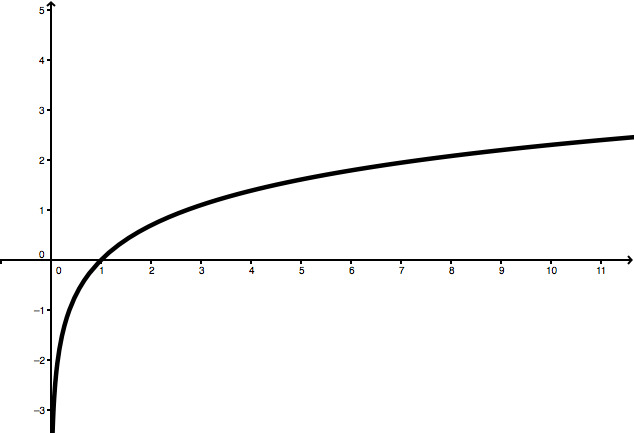ln-function
The logarithm function with base , i.e., Euler's number, is called the natural logarithm or -function. It is specified by:
Here, is the logarithm with base , that is, .

Eigenschaften
Die -Funktion hat die gleichen Eigenschaften wie Logarithmusfunktionen zu beliebigen Basen. Weil ist sie monoton steigend.
Graph der -Funktion:

Beziehung zu anderen Funktionen
Umkehrfunktion
Die Umkehrfunktion der -Funktion ist die -Funktion. Für gilt also:
Ableitung
Die Ableitung von , ist gegeben durch:
Stammfunktion
Das erste Integral bzw. eine Stammfunktion zu lautet:
Zur Herleitung bzw. Berechnung der Stammfunktion siehe den Artikel Partielle Integration.
Beliebige Logarithmusfunktion als ln-Funktion
Einen Logarithmus zu einer beliebigen Basis (mit , ), kannst du über folgende Formel in eine ln-Funktion überführen:
Exercises
You can find more exercises in the following folder::
Gemischte Aufgaben zur e- und ln-Funktion
Still want more?
You can find more content on this topic here: